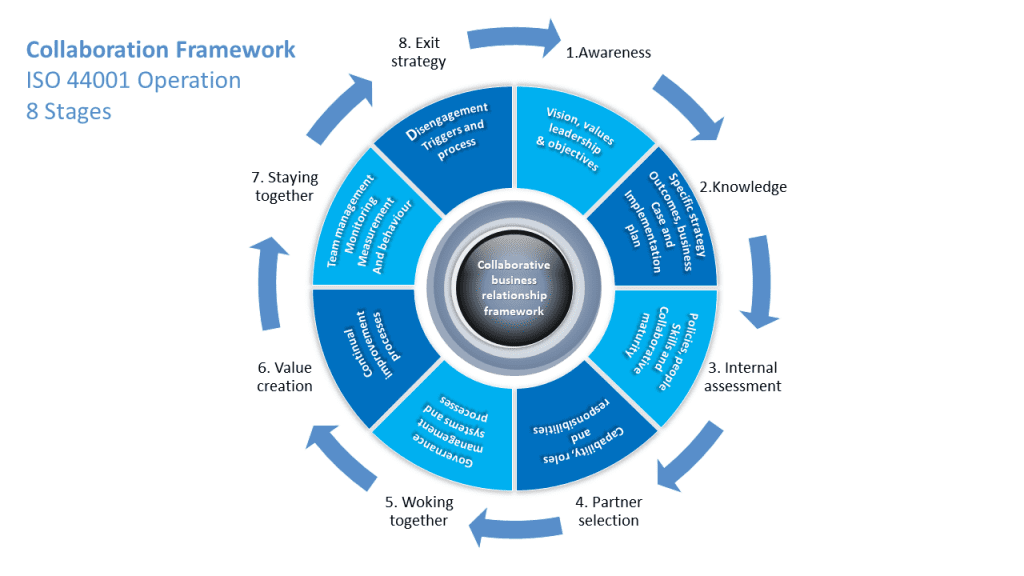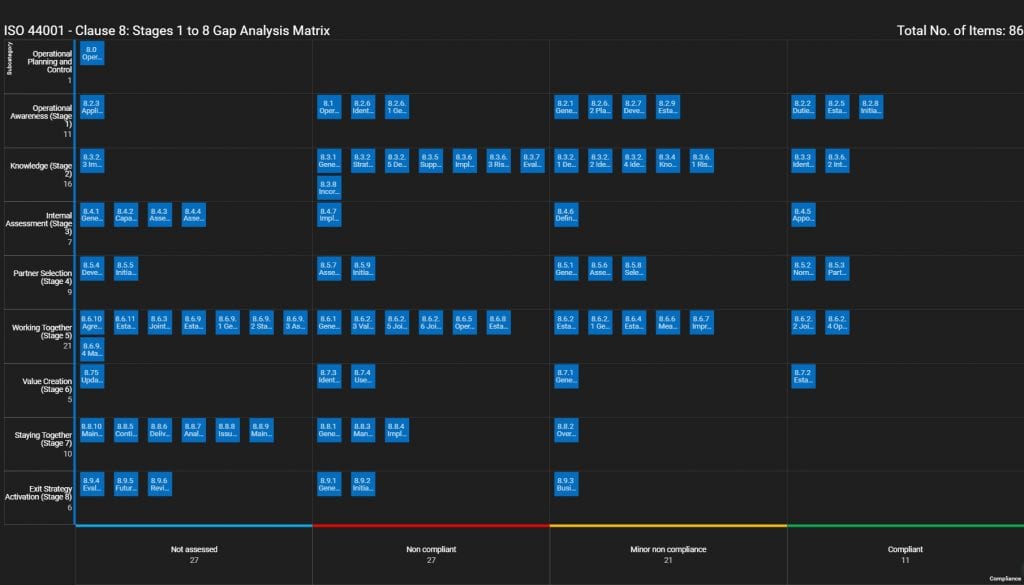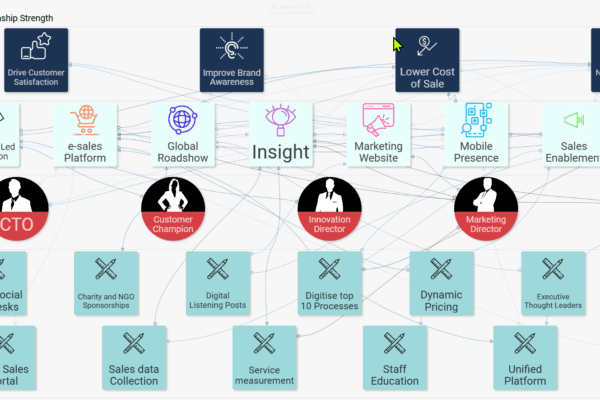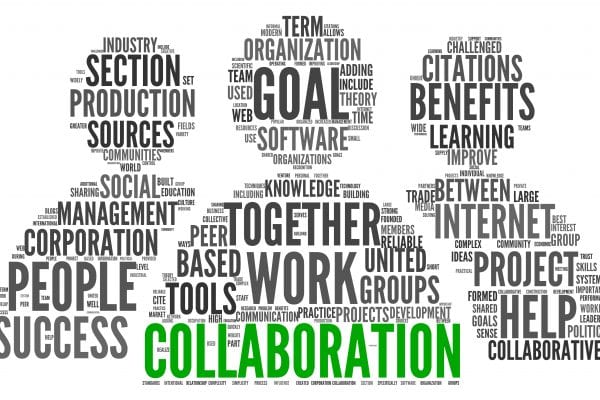Your 8 Step Collaboration Framework
Collaboration is a key aspect of your business and its not just about online meetings! Its a lot more than that.
Use this proven eight step framework as your blueprint to create your business collaboration strategy and find out more what you need to consider, by completing a collaboration gap analysis.

Discover your Collaboration Gaps and Opportunities
Based on the model above you can quickly assess your business and operational collaboration capability against the ISO 44001 8 stage framework illustrated above.
To get started you can complete this initial gap analysis by clicking the orange button above or at the bottom of this page. You also have the opportunity to complete the more detailed collaboration gap analysis as shown below.

Online ISO 44001 Collaboration Gap Analysis Workshop s
Why do we need to collaborate?
Have you ever wondered how we would survive in business or in life generally if we did not collaborate with other people? We would not last very long in business and as a person, you would probably be called a hermit!
Collaboration is all about working together to achieve a goal or an agreed outcome in a positive and mutually beneficial way.
To do this means that there needs to be an attitude, a willingness to communicate and interact with other people. Not only with your immediate colleagues but with people who you have never met and increasingly, may never ever meet physically. Due to the ability for us to connect, collaborate and communicate with people electronically via the Internet, means collaborating “virtually” is now becoming quite the norm.
Hybrid Working
Since publishing this post back in July 2011, its interesting to see what I wrote then is even now more relevant.
The COVID pandemic has accelerated the various types of collaborations in so many ways.
Organisational Collaboration
Organisationally businesses have had to adapt to support remote working/working from home both internally and with their business partners and clients. Leadership has had to step up to ensure their is alignment, teamwork and the right culture to support and facilitate collaboration as a key activity both tactically and strategically.
People Collaboration
Peoples behaviours have always been important. Whether you take a transactional, adversarial, closed or a trusting, open and collaborative approach to how you work and interact with colleagues, is going to have a significant impact on your levels of performance and productivity. This is even more so now that hybrid working is the norm.
Process Collaboration
When there is leadership, alignment and team work, with people who have the right behaviours, skills and experiences to complete the work, there are times when the desired outcomes are not always delivered successfully. Simplifying you ways-of-working, removing the 7 deadly sines of waste, putting clear joint roles and responsibilities (RACI) in place will ensure your business processes operate efficiently and effectively.
System/Data Collaboration
Supporting and enabling people to complete their business processes are the various systems and data to help uncover insights and simplify complex decision making. Having poor quality data and systems that are not functionally correct and integrated means people cannot complete their business processes adding, time, costs and risks to your business. Systems and data need to be able to collaborate with other systems and data, processes, people and other businesses.
So how do you create a collaborative business relationship when you may never actually meet that person? Apart from having the interpersonal skills we all need a model or a framework from which to work from. This model will help us make sure that we develop organisational, people, process and system relationships in a positive and collaborative way.
Making sure that we collaborate and partner with the right people is one of the most important, if not the most important decision, so that we do not expose ourselves to unnecessary risks as well as wasting time and money.
Co-create Your Strategic Collaboration Roadmap
To help people understand how to develop a positive collaborative business relationship, using the ISO 44001 (BS 11000) standard as a guide, will help you to ensure you take the necessary steps to maximise the potential opportunity for all parties. There are 3 key strategic approaches within ISO 44001 (BS 11000) that have a total of 8 stages as shown above. Working your way through the standard might be one approach, but if you and your colleagues are to gain an understanding so that there is alignment and focus with everyone, developing your your strategic collaboration model can be best achieved using workshops.
The view below – Online ISO 44001 Collaboration Gap Analysis Workshop shows how you can co-create your collaboration strategy and roadmap with other colleagues and or business partners, in a visual and interactive way.
The workshop process starts with a GAP analysis looking at the 8 stages (steps) of this strategic approach, which are listed below. For further details click on each stage which will open a new tab:
- Awareness
- Knowledge
- Internal Assessment
- Partner Selection
- Working together
- Value Creation
- Staying Together
- Exit Strategy
The view above shows an example of our online ISO 44001 Gap Analysis of the 8 Stages listed above with the various activities you should consider and implement.
This is done using our App R-CaaS (Roelto Collaboration-as-a-Service).



